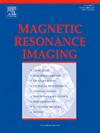Noise reduction in magnitude diffusion-weighted images using spatial similarity and diffusion redundancy
IF 2
4区 医学
Q2 RADIOLOGY, NUCLEAR MEDICINE & MEDICAL IMAGING
引用次数: 0
Abstract
Purpose
Diffusion-weighted imaging (DWI) has significant value in clinical application, which however suffers from a serious low signal-to-noise ratio (SNR) problem, especially at high spatial resolution and/or high diffusion sensitivity factor.
Methods
Here, we propose a denoising method for magnitude DWI. The method consists of two modules: pre-denoising and post-filtering, the former mines the diffusion redundancy by local kernel principal component analysis, and the latter fully mines the non-local self-similarity using patch-based non-local mean.
Results
Validated by simulation and in vivo datasets, the experiment results show that the proposed method is capable of improving the SNR of the whole brain, thus enhancing the performance for diffusion metrics estimation, crossing fiber discrimination, and human brain fiber tractography tracking compared with the different three state-of-the-art comparison methods. More importantly, the proposed method consistently exhibits superior performance to comparison methods when used for denoising diffusion data acquired with sensitivity encoding (SENSE).
Conclusion
The proposed denoising method is expected to show significant practicability in acquiring high-quality whole-brain diffusion data, which is crucial for many neuroscience studies.
利用空间相似度和扩散冗余对星等扩散加权图像进行降噪。
目的:弥散加权成像(diffusion weighted imaging, DWI)具有重要的临床应用价值,但其存在严重的低信噪比问题,特别是在高空间分辨率和/或高弥散敏感系数下。方法:本文提出了一种震级DWI去噪方法。该方法包括前去噪和后滤波两个模块,前去噪利用局部核主成分分析挖掘扩散冗余,后滤波利用基于补丁的非局部均值充分挖掘非局部自相似度。结果:通过仿真和活体数据验证,实验结果表明,与三种最先进的对比方法相比,该方法能够提高全脑信噪比,从而提高扩散指标估计、交叉纤维识别和人脑纤维束图跟踪的性能。更重要的是,当使用灵敏度编码(SENSE)获取的扩散数据去噪时,该方法始终表现出优于比较方法的性能。结论:所提出的去噪方法有望在获取高质量的全脑扩散数据方面显示出显著的实用性,这对许多神经科学研究至关重要。
本文章由计算机程序翻译,如有差异,请以英文原文为准。
求助全文
约1分钟内获得全文
求助全文
来源期刊

Magnetic resonance imaging
医学-核医学
CiteScore
4.70
自引率
4.00%
发文量
194
审稿时长
83 days
期刊介绍:
Magnetic Resonance Imaging (MRI) is the first international multidisciplinary journal encompassing physical, life, and clinical science investigations as they relate to the development and use of magnetic resonance imaging. MRI is dedicated to both basic research, technological innovation and applications, providing a single forum for communication among radiologists, physicists, chemists, biochemists, biologists, engineers, internists, pathologists, physiologists, computer scientists, and mathematicians.
 求助内容:
求助内容: 应助结果提醒方式:
应助结果提醒方式:


